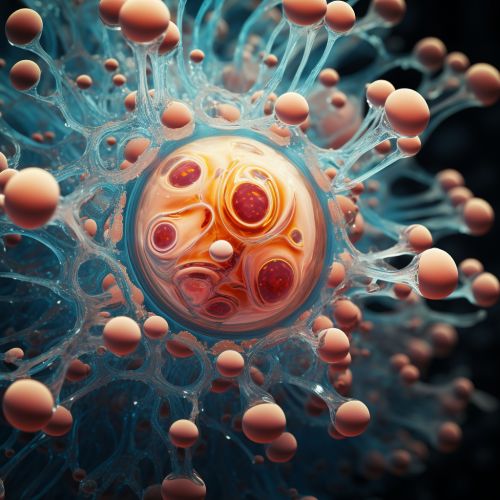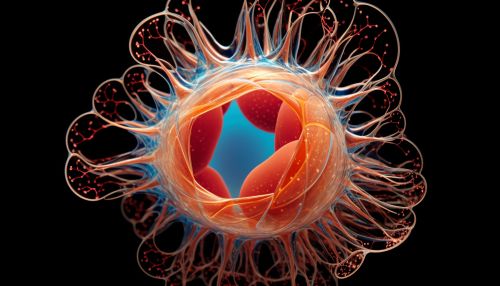Cytoplasm
Overview
The Cytoplasm is the part of the cell that is enclosed within the cell membrane. It is a jelly-like substance in which other cellular components are suspended. The cytoplasm is about 70% water and usually colorless. It is within the cytoplasm that most cellular activities occur, such as many metabolic pathways including glycolysis, and processes such as cell division.
Composition
The cytoplasm is composed of three major elements; the cytosol, the organelles, and various cytoplasmic inclusions.
Cytosol
The cytosol is the liquid component of the cytoplasm and contains the organelles. It is a complex mixture of substances dissolved in water. The cytosol's concentration of water is high, giving it a gel-like appearance. It also contains large amounts of ions, which are necessary for various cellular processes.
Organelles
Organelles are structures within the cell that perform dedicated functions. They are suspended in the cytosol and perform various roles, from generating energy to producing proteins. Major organelles include the nucleus, mitochondria, endoplasmic reticulum, Golgi apparatus, vacuoles, and lysosomes.
Cytoplasmic Inclusions
Cytoplasmic inclusions are particles that are temporarily present in the cytoplasm. These can include nutrients, waste products, and secretory products.


Functions
The cytoplasm has several functions in the cell. It is a medium for the transport of molecules, a site for many metabolic reactions, and provides a platform for the movement of cellular components.
Metabolic Pathways
Many of the metabolic pathways in a cell occur in the cytoplasm. These include protein synthesis, the first stage of cellular respiration (glycolysis), and the division of cells (cytokinesis).
Protein Synthesis
Protein synthesis occurs in the cytoplasm. The process begins in the nucleus with the transcription of DNA into RNA. The RNA is then transported out of the nucleus into the cytoplasm, where it is translated into proteins.
Cellular Respiration
The first stage of cellular respiration, known as glycolysis, occurs in the cytoplasm. During glycolysis, glucose is broken down into pyruvate, producing a small amount of ATP (the cell's energy currency).
Cell Division
During cell division, the cytoplasm plays a crucial role. The process of cytokinesis, where the cytoplasm divides to form two new cells, occurs in the cytoplasm.
